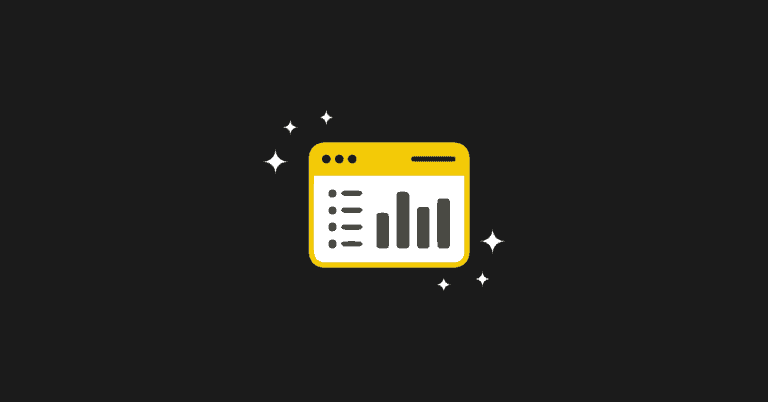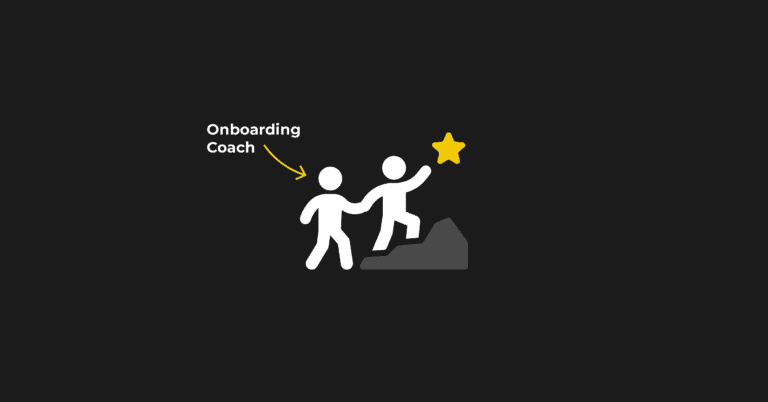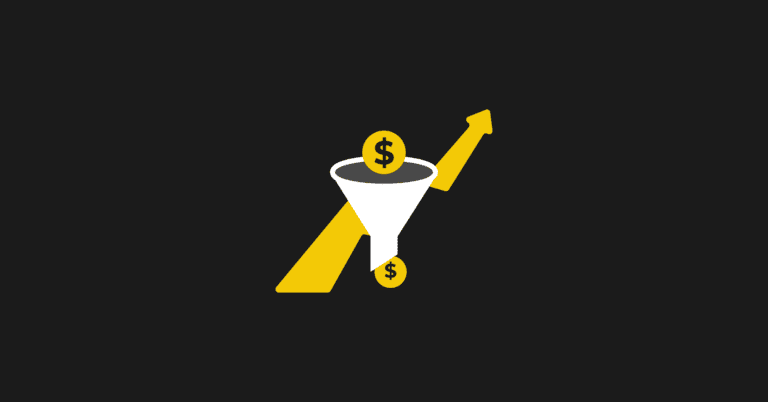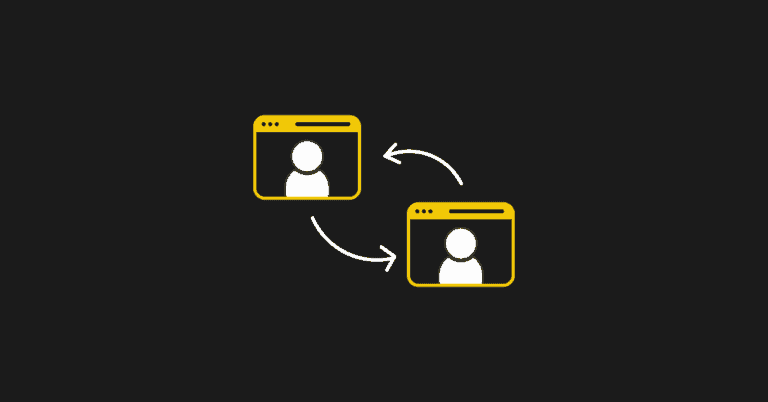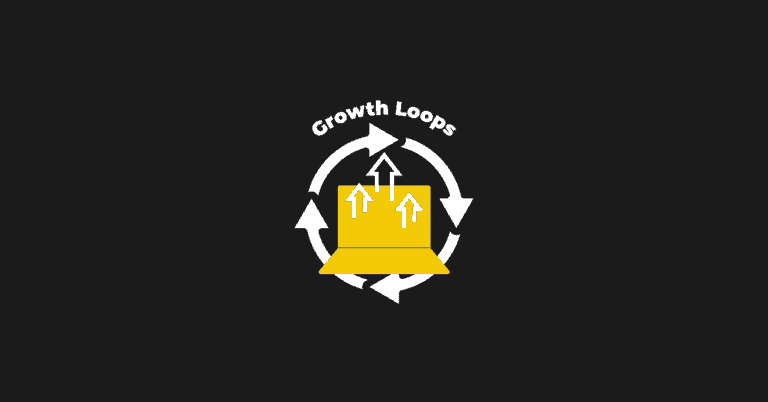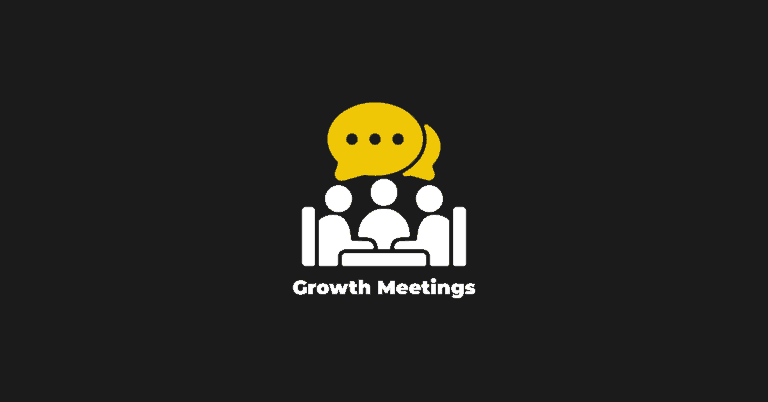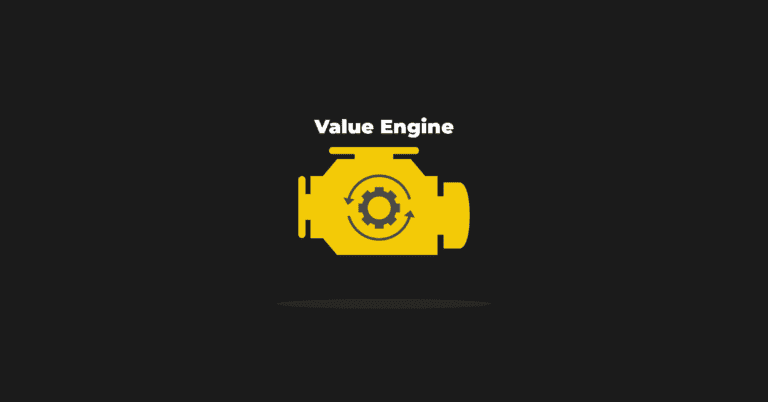Many digital companies mistakenly believe that a brand's tone of voice is more suited to physical direct-to-consumer products. However, developing the right tone of voice for your SaaS product can offer significant advantages, including:
- Set your product apart from your competitors.
- Humanize your brand and show your culture.
- Build trust through familiarity.
- Influence users with a personal connection.
Your brand voice extends beyond the mere features and functionalities of the product. It focuses on how the product communicates its message, values, and personality to users.
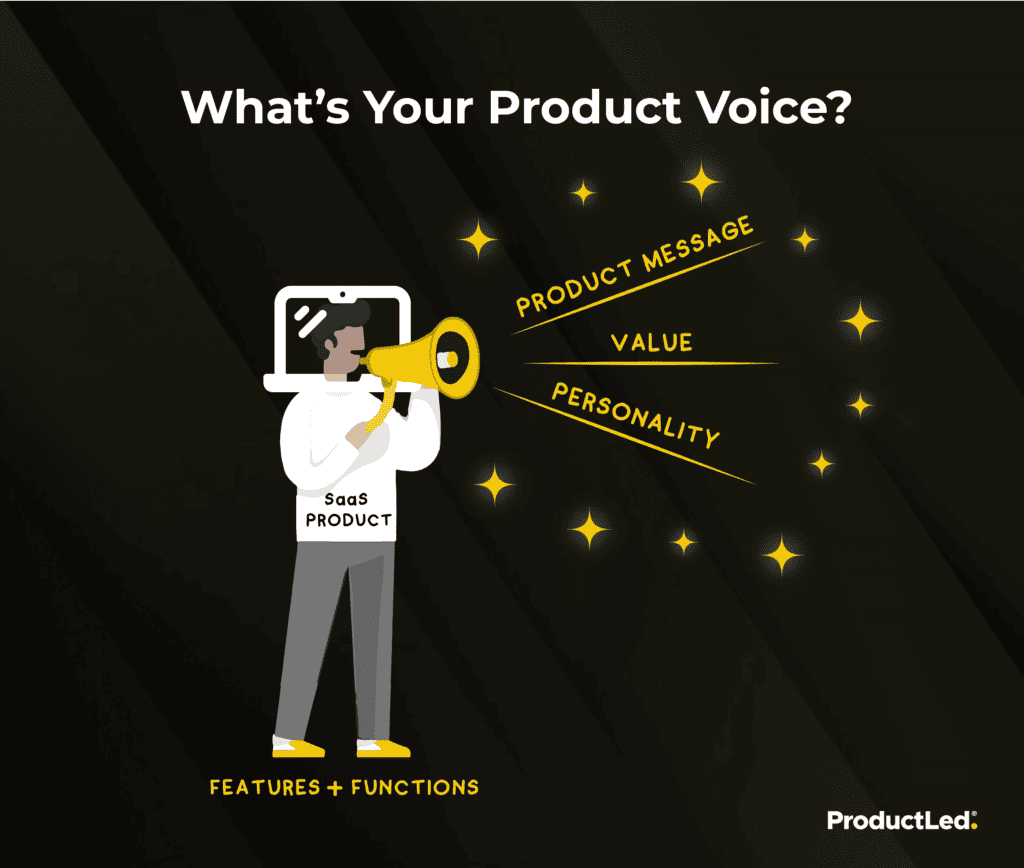
So, how do you create your unique tone of voice to connect with users?
Let's dive into my 3-step guide to help you identify the right tone of voice for your brand. Later in the article, I will demonstrate the power of product voice with a few examples.
Step 1: Identify your company’s culture
Determining the correct tone of voice for your company starts by gathering data.
By compiling external and internal data, you get a sense of your company’s tone and your target audience’s culture.
Internal Resources
Here are three internal resources you can look at today to better understand your company's culture.
#1. Mission and Values
Reviewing the mission and values of your company is the best place to start because if there’s a disconnect between your values and tone of voice, communicating those values to an external audience will be much more complicated.
Depending on your values, you should decide whether your tone should be more rebellious, relaxed, professional, or friendly.
#2. Existing Content
Probably without even thinking about it, your content has already started shaping a consistent tone with your brand.
While this is not always the case, consider the existing tone and avoid going in a completely different direction. Instead, evolve that tone to make it more impactful and meaningful.
#3. Internal Conversation
How does your team communicate with each other?
While looking here may seem strange, it’s a great resource of ideas. And more importantly, it's tough to create a brand tone of voice completely separate from your team culture.
The closer your tone of voice is to your existing team culture, the easier it is to maintain. So consider your company's internal communication style and strengthen it into an asset of your own.
External Resources
Now, let us look outside of the company. Here are four external resources you can use to help develop your brand tone.
#1. Audience
When communicating with your target audience, ask yourself the following questions:
- What is likely to resonate with our target audience?
- How do those people already communicate between themselves?
- What is your audience’s communication style on online communities such as LinkedIn or Slack?
- What resonates with your audience?
- Is the communication formal or informal?
- What type of words do they use?
Consider staying as close to the vocabulary of your audience as possible.
#2. Competitors
The next thing you should consider is your competitors. This action shouldn’t be your starting point, but it is relevant. Doing so will help you avoid becoming a carbon copy of an existing brand. The last thing you want to do is look like you stole another company’s character.
However, see where there’s a blank space and if you can strengthen your company’s unique tone to fill that space.
#3. Channels
Another thing to consider is the channels where you're active. You will need to vary your tone from channel to channel.
A great example of this is Nike. Nike’s communication to direct customers is motivating, strong, and energetic. They keep a consistent tone throughout their channels but shift their tone on LinkedIn.
Nike still talks about leadership and motivation on LinkedIn, but they do it through internal company stories instead of athletics. At the same time, they keep a tone that motivates others.
So, while maintaining their core brand personality, Nike modifies their tone depending on the channel.
#4. Local Specifics
The last thing you want to consider is local specifics. If you are present in many different markets or you want to sound native to many different locations, you need to consider your vocabulary and tone.
I'm not talking about localizing content in a different language. But for example, awesome in the US is used frequently for minor things and doesn't necessarily mean the same as awesome in Europe. The word awesome in the US often means a run-of-the-mill, while Europeans are more careful when going into superlatives.
Keep in mind these local specifics, and consider working with local advisors or consultants to see what's important to them and how your voice needs to be re-imagined for that particular location.
Now, let’s dig a bit deeper into your company culture.
Step 2: Integrate the tone of voice with your team
Digging deeper is most effective after conducting preliminary research. This way, you know where the edges are, but going a bit deeper with the help of specific tone of voice exercises can help uncover what your brand needs.
The best way to do this is to get your team together and do exercises to show them what the tone of voice needs to sound like. One challenge we often see is that tone of voice can be very fickle, even if you have a good idea of what you want. It might take a lot of work to verbalize that to an external audience or your internal team.
Luckily, these exercises will get everyone on the same page.
#1. The Personality Slider
Here is an exercise I came across at Google Ventures – the Three-Hour Brand Sprint. It’s a framework to define a brand within three hours, which is very powerful.
Look at each slider and consider where you want your brand to be. Then, mark where your brand currently is and where you want it to be. Or even add a couple of your main competitors, just for the sake of making sure that you are different. Finally, use at least one or two sliders compared to your competitors. For example, here’s a personality slider we did for our company in the image below.
The first one we have is elite versus mass appeal. No brands are at the end of those lines but shoot for somewhere as far from the middle point as possible.
The worst action you can take is to keep all of your dots at the center of each slider. That's not a brand. That's a robot talking to a person. There are various reasons why you might want your brand to be on one side of the spectrum compared to the other, and these reasons need to be discussed and agreed upon internally.
The most exciting part of this exercise is not just putting the slider somewhere but talking to your team and discussing why you want the slider in a very specific position.
#2. Tone of Voice Dimensions
The second exercise goes deeper and starts from a very similar place to Google’s personality sliders.
This exercise is based on Nielsen Norman Group’s work on the tone of voice. The examples they give when talking about the tone of voice are very applicable to product copy in particular.
It uses four different voice dimensions. So, for instance, you may be neutral on a few of them. But if you are neutral on them all, I recommend reviewing what you are trying to do.
In this exercise, you add a couple of tone of voice ingredients for each of the four dimensions. I.e., a couple of words that explain what you mean. This helps distinguish specifics. For example, you don’t want to be formal for the sake of being more professional. The reason you want to be formal is to be more trustworthy.
In this sense, you take this basic skill to make it more specific and imbued with meaning.
Here are the voice dimensions I created for my brand. Look closely at the second dimension.
For serious versus funny, I chose neutral because I want elements from both sides. I want to be humorous, but I also want to write in an informative way.
My blog posts need to convey a lot of additional information to people, so that's where we take this very uninformative, neutral position. It doesn’t say a lot if you keep the scale on neutral, but it makes sense when you look at the characteristics, it makes sense.
You can then include these words in your final brand tone of voice document (which we will cover below).
#3. Brand Archetypes
Brand archetypes are your brand’s personality. It goes deeper into the brand than the way it talks; It’s also about how it acts and believes.
This exercise provides the most detail about why your brand needs to act or talk in a certain way.
These archetypes are an old concept first defined by Carl Jung. Jung defined 12 archetypes common among (almost) all cultures and people. If you use one of these archetypes, it'll be effortless for people to understand where you're coming from.
The concept of brand archetypes can be harder to grasp. Still, there are easy ways to understand it in more detail.
Here are some examples of each archetype in action.
Freedom-Motivated Brand Examples
The first is the category of freedom-motivated brands. These are brands that try to move across boundaries.
The archetypes are categorized as follows:
- Innocent
- Sage
- Explorer
They want to be as free as possible and can achieve that freedom in many different ways — for example, media brands.
Ego-Motivated Brand Examples
The second category is ego-motivated brands. These brands are motivated by the will to impact the world meaningfully.
These archetypes are categorized as follows:
- Outlaw
- Magician
- Hero
Social-Motivated Brand Examples
The third category is social-motivated brands, so they try to connect with others, which is their main end goal. These brands often have to do with positive experiences – they’re trying to be joyful, happy, and lovable.
These archetypes are categorized as follows:
- Lover
- Jester
- Everyman
The idea of the Everyman archetype might be very applicable if you are building a product that appeals to a vast audience.
Order-Motivated Brand Examples
The final category is order-motivated brands. These are brands that try to provide structure to the world.
These archetypes are categorized as follows:
- Creator
- Ruler
- Caregiver
Lego is a strong example of a Creator brand.
When I do brand exercises with clients, we brainstorm a primary archetype and think of two or three secondary archetypes. You want to use secondary archetypes for one of your primary qualities.
Step 3: Codify your data to work for you
The final step is to put everything to use.
You've done the research and exercises at this point, and your team has collectively defined what you want your brand to sound like.
How do you integrate that into everyday tasks?
The easiest way is to create a brand voice chart. Then permeate it throughout the company. Place it in front of every person who communicates externally.
Here’s an example of a brand voice chart.
Add a description of each voice characteristic you defined in Exercise #2 and a couple of dos and don'ts. This is the most useful for everyday work. It helps you say what you want to be, what you don't want to be, and what you don't want your brand to sound like.
To go further, you can create a complete brand style guide to focus on your tone of voice. MailChimp’s content style guide is probably the most popular and detailed. Here are a couple of other examples:
Look at style guides online for inspiration on what you can include.
The final element of this is to modify it based on different contexts.
For example, add a couple of scenarios for different contexts, like writing for a marketing campaign versus replying to a customer service request.
Context scenarios can be:
- Marketing content
- Advertising
- Customer service
- Product copy
- Investor memos
These will be different, but they still need to sound on brand. The best way to ensure this happens is to have a designated Chief Voice Officer. This is someone who pays attention to how your brand communicates and does a quick check before you publish anything.
With these three steps, it's easy to discover a tone of voice that differentiates you from competitors, makes people feel more connected with you, and elicits a specific emotional response.
Product Voice Examples
Let's explore examples of distinct brand voices.
Innocent vs. BrewDog Beverage Brands
Let’s look at two UK beverage companies with different brand ethos.
Innocent is a healthy drink brand with a fun and fresh approach. The company’s dedication to social and eco-friendly practices is present right off the bat on their homepage horoscope reading: “You will become unexpectedly interested in crushed fruit and companies that give 10% of profits to charity.”
In comparison, you have BrewDog Craft Beer, portraying itself as rebellious and different.
BrewDog shows its distinct brand voice in its product copy, with phrases like "Punk IPA, Bold. Hoppy. Tropica," "Shore Leave, Rock. The. Boat," and "Mr. President, Chewy. Pine. Apricot"
The language is more edgy and aggressive.
How These Examples Apply to SaaS Products
Humans are not logical creatures. We rely a lot on emotion. When interacting with a tool, we don't just think about the features; we look at the product and try to feel a sense of connection.
We want to feel that we are talking to someone. In particular, to think that we're working alongside a partner rather than a tool.
People don’t always remember what you say or do, but they always remember how you made them feel.
Have you heard this quote from Maya Angelou? This is where the brand’s tone of voice does a lot of work. In a highly competitive market, a unique tone of voice will distinguish you from your competitors and help your company show character.
In his book “Influence,” Robert Cialdini said people appreciate things more manageable when they like the person they’re talking to. In this case, it’s the brand they are talking to. Connecting with users meaningfully helps reduce churn and persuades them to stay with your product.
Brand Voice In Simple Everyday Occurrences
For example, a user goes to your website and receives a 404 error.
As you can see in the image below, ActiveCampaign chose a professional and smart direction.
ActiveCampaign uses a clear and concise message, almost devoid of any emotion. They’re straight to the point, but jazz it up with a visual on the right.
On the other end of the spectrum is Mailchimp. The image below shows Mailchimp is quirky and weird, bordering on extravagant even.
If you click on the horse, who's looking in a hole at the bottom of the page, a game starts in your browser.
Neither ActiveCampaign nor Mailchimp's approach is better than the other. Still, it shows how similar products can differentiate their communication styles.
What's Your Unique Product Voice?
Your unique product voice differentiates your product in the market and creates a lasting impression on your customers. It's not just about what you say, but how you say it.
Your product voice should reflect your brand's values, personality, and target audience.
Follow my three-step guide outlined above, and for more guidance on seamlessly integrating your product voice into your product-led model, check out the nine components of the ProductLed GTM System. Developed by Wes Bush, the founder of ProductLed, this free system is designed to help you scale your self-serve revenue faster without working harder.
Start on the path to scale your SaaS company with confidence and clarity.


